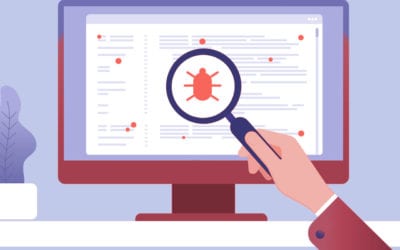Email, without a doubt, is still an important method of communication for businesses, but it is not without its considerable cybersecurity risks. Email concerns have become one of the most pressing concerns for businesses as they create inefficiencies in addition to the risks presented. In fact, Cyber Security Hub’s Mid-Year Market Report 2022 found that 75 percent of cybersecurity practitioners think that email-based attacks such as phishing and social engineering are the biggest cybersecurity threats their organizations face.
What’s the Risk?
Not only is email used as a fast and inexpensive means of communication, but a large number of businesses use the service as an eternal data repository, exploited by employees for the convenience and the absence of controls. This results in valuable information assets just lingering in email systems. This is a problem because confidential, protected, and proprietary information left stored in unencrypted inboxes can present a variety of serious security risks.
Adding a degree of severity to these risks is the fact that email is the primary tool used by hackers and cybercriminals to deliver malware, including ransomware, in order to gain unauthorized access to an entity’s networks and information. A considerable percentage of the largest data breaches have been as a result of phishing emails, and while SPAM filtering is a helpful tool, it cannot be depended on alone to block all malicious emails.
Adding another element of risk, in the past, companies have not considered an information governance framework when selecting and configuring email systems. Often, email systems may not be designed with enough focus on the information management lifecycle, have sub-optimal information management habits, including saving all items in inboxes and folders, and can become institutionalized. Another concern is that the email user interface may not be intuitive, so therefore, will lack the functionality to advance cybersecurity goals.
How Can You Stay Safe?
There is a variety of low-threshold solutions that can be applied, in order to mitigate some of the risks involved. It is possible to effectively implement solutions without having a significant impact on user experience by identifying existing user habits and incorporating them into email management.
An ideal starting place is to establish and clearly communicate policies that address any areas of concern. These policies can be used to leverage a current state baseline used to measure future improvements. Companies can develop methods, in order to reduce the risk of intrusion from risky sites, or those with heavy traffic by limiting email in the company to business communication and executing all personal correspondence to personal devices.
It is also a good idea to restrict network access to popular communication and collaboration sites, such as Yahoo! and Gmail, as part of the policy. This serves the additional goal of supporting the increased efforts of companies to get their business partners to adopt their own internal policies as an aspect of a far-reaching data protection strategy.
For companies attempting to streamline policies and maximize efficiency, care should be taken to design small portions of intuitive training and education in order to ensure the user population is adequately prepared to handle any threats that may be encountered on a daily basis. In order to maximize effectiveness, it is important for companies to simplify things by reducing the burden of users to know and understand how to properly use the system.
Email systems and practices expose organizations to a variety of serious cybersecurity issues, however, realistic solutions are available. In addition to currently configured email systems businesses are able to mitigate the risks by developing and implementing policies designed to address some of the larger security threats, and provide better training and education to positively impact user behavior.
Discover more about securing the gateway to your business: your email. Call Integris at (888) 330-8808 or email us at [email protected] to learn about our managed IT services. We’ll keep you safe and operating efficiently around the clock – all for a flat-rate monthly fee.



